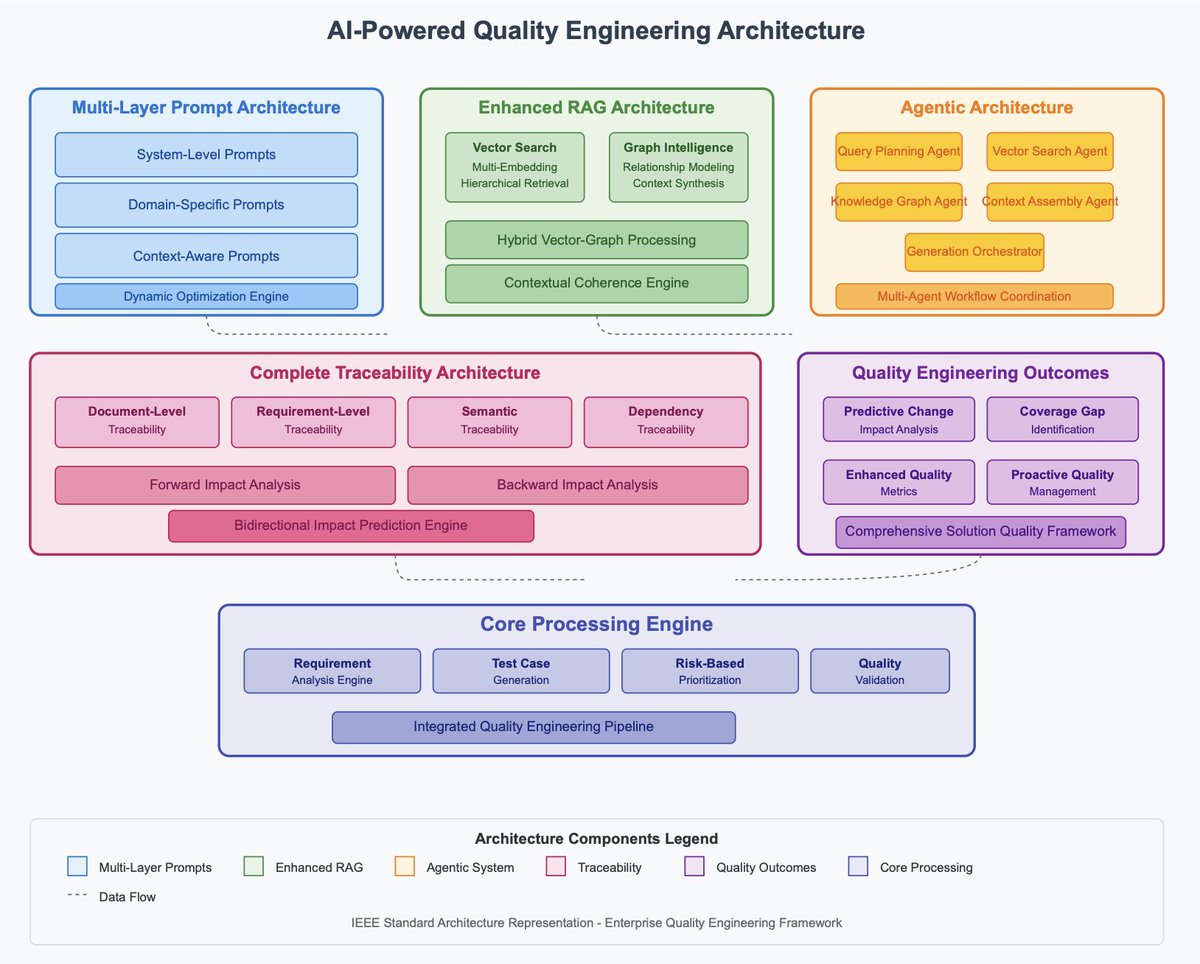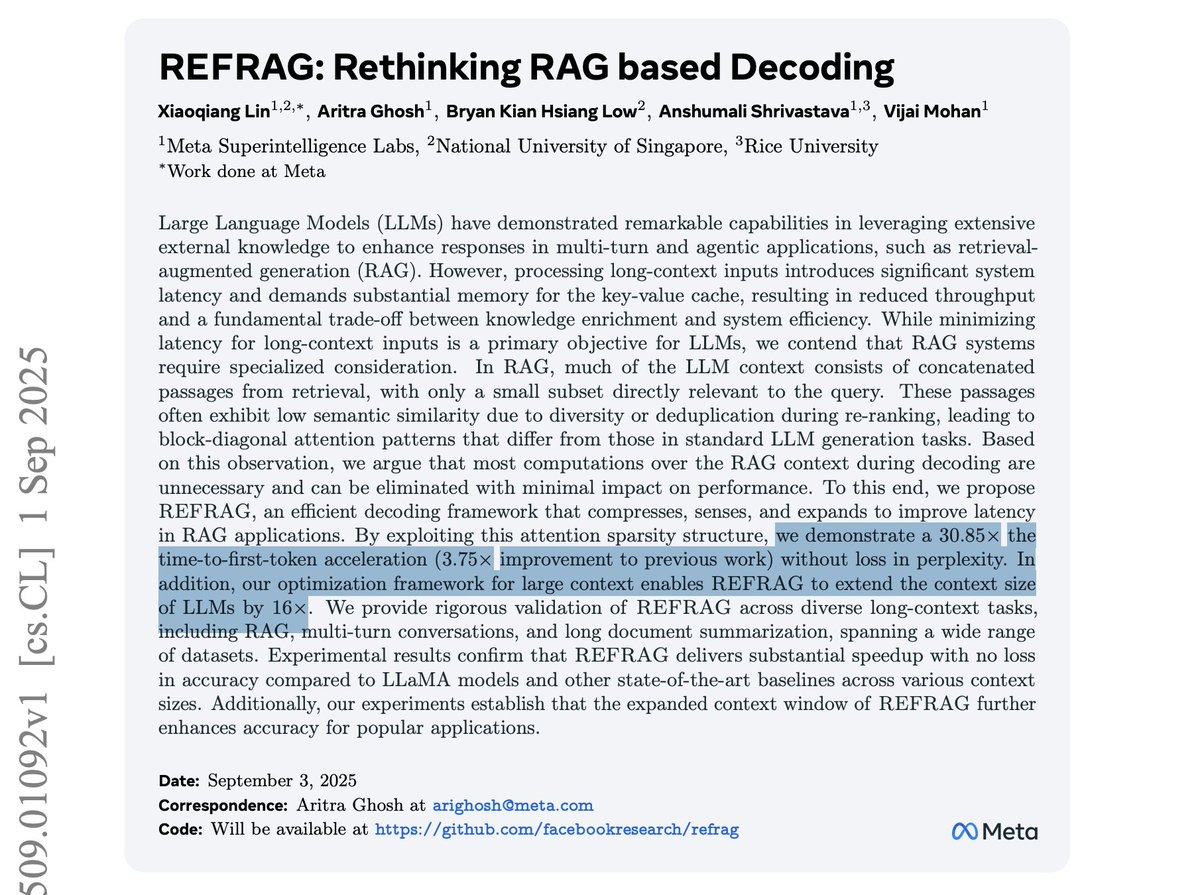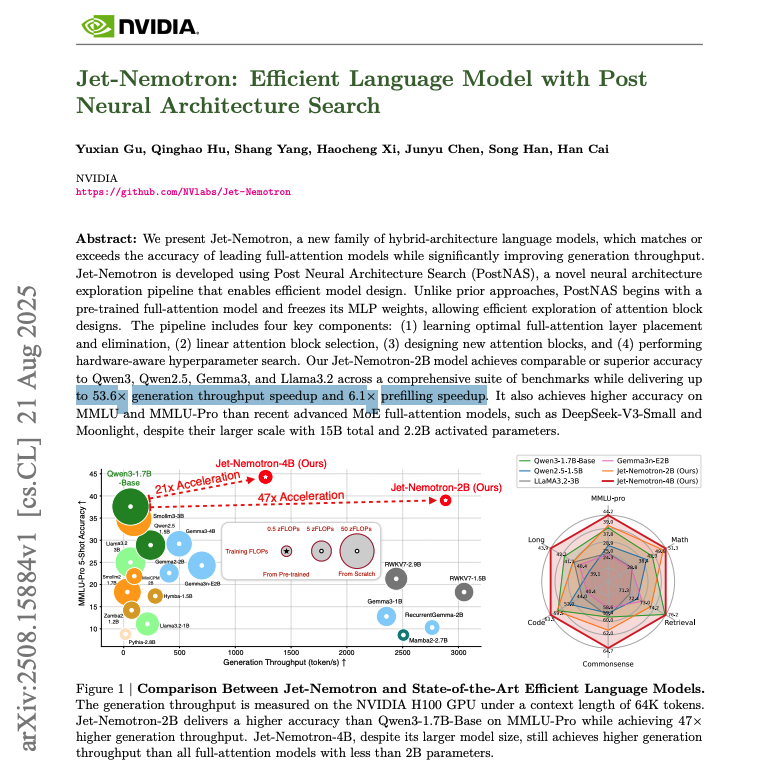Apple just changed the game with AI. But it's not what you think.
They used AI agents to cut software testing time 85% and improve accuracy 45%.
Apple proved the ROI of AI.
This is not what I expected from them.
What else are they cooking in Cupertino?
Here's how it works:
- Map: Feeds all project documentation into a hybrid knowledge base using a vector database for semantic search and a graph database (TigerGraph). It maps the relationships between business processes that AI often misses.
- Delegate: Assigns specific jobs to a team of specialized agents. A 'legacy analysis' agent, a 'compliance validator,' and a 'test case generator' work together. They used Gemini Pro for complex reasoning.
- Automate: Generates 25,000 test cases with full contextual awareness, achieving 98.7% functional coverage and complete requirement traceability from end to end.
Result: This Agentic RAG system improved accuracy by 45% (from 65.2% to 94.8%), crushing the baseline of older AI methods.
This isn't a lab experiment. It was validated on a real-world SAP S/4HANA migration with over 100 external system integrations.
Why this matters:
- Business Leaders: An 85% timeline reduction and a projected 35% cost saving is a massive competitive advantage. This de-risks projects and changes the economics of enterprise software deployment.
- Practitioners: This provides a production-grade blueprint to use AI for creating test artifacts. The hybrid vector-graph architecture solves the context-loss problem that plagues most enterprise AI automation.
- Researchers: This paper provides a real-world validation of multi-agent systems. It demonstrates that moving from monolithic RAG to orchestrated, specialized agents is necessary for solving complex, context-dependent enterprise problems.
They used AI agents to cut software testing time 85% and improve accuracy 45%.
Apple proved the ROI of AI.
This is not what I expected from them.
What else are they cooking in Cupertino?
Here's how it works:
- Map: Feeds all project documentation into a hybrid knowledge base using a vector database for semantic search and a graph database (TigerGraph). It maps the relationships between business processes that AI often misses.
- Delegate: Assigns specific jobs to a team of specialized agents. A 'legacy analysis' agent, a 'compliance validator,' and a 'test case generator' work together. They used Gemini Pro for complex reasoning.
- Automate: Generates 25,000 test cases with full contextual awareness, achieving 98.7% functional coverage and complete requirement traceability from end to end.
Result: This Agentic RAG system improved accuracy by 45% (from 65.2% to 94.8%), crushing the baseline of older AI methods.
This isn't a lab experiment. It was validated on a real-world SAP S/4HANA migration with over 100 external system integrations.
Why this matters:
- Business Leaders: An 85% timeline reduction and a projected 35% cost saving is a massive competitive advantage. This de-risks projects and changes the economics of enterprise software deployment.
- Practitioners: This provides a production-grade blueprint to use AI for creating test artifacts. The hybrid vector-graph architecture solves the context-loss problem that plagues most enterprise AI automation.
- Researchers: This paper provides a real-world validation of multi-agent systems. It demonstrates that moving from monolithic RAG to orchestrated, specialized agents is necessary for solving complex, context-dependent enterprise problems.

Apple's multi agent software testing cut testing time per task from 18 min to just 1.5 min.
They were able to deliver 85% faster slashing YEARS off their project timeline.
They were able to deliver 85% faster slashing YEARS off their project timeline.

Apple's Agentic RAG system beat every other method in accuracy, completeness, consistency, and traceability. 

Agentic RAG for Software Testing with Hybrid Vector-Graph and Multi-Agent Orchestration by @Apple
Submitted: 12 Oct 2025
arxiv.org/abs/2510.10824
Submitted: 12 Oct 2025
arxiv.org/abs/2510.10824
• • •
Missing some Tweet in this thread? You can try to
force a refresh











